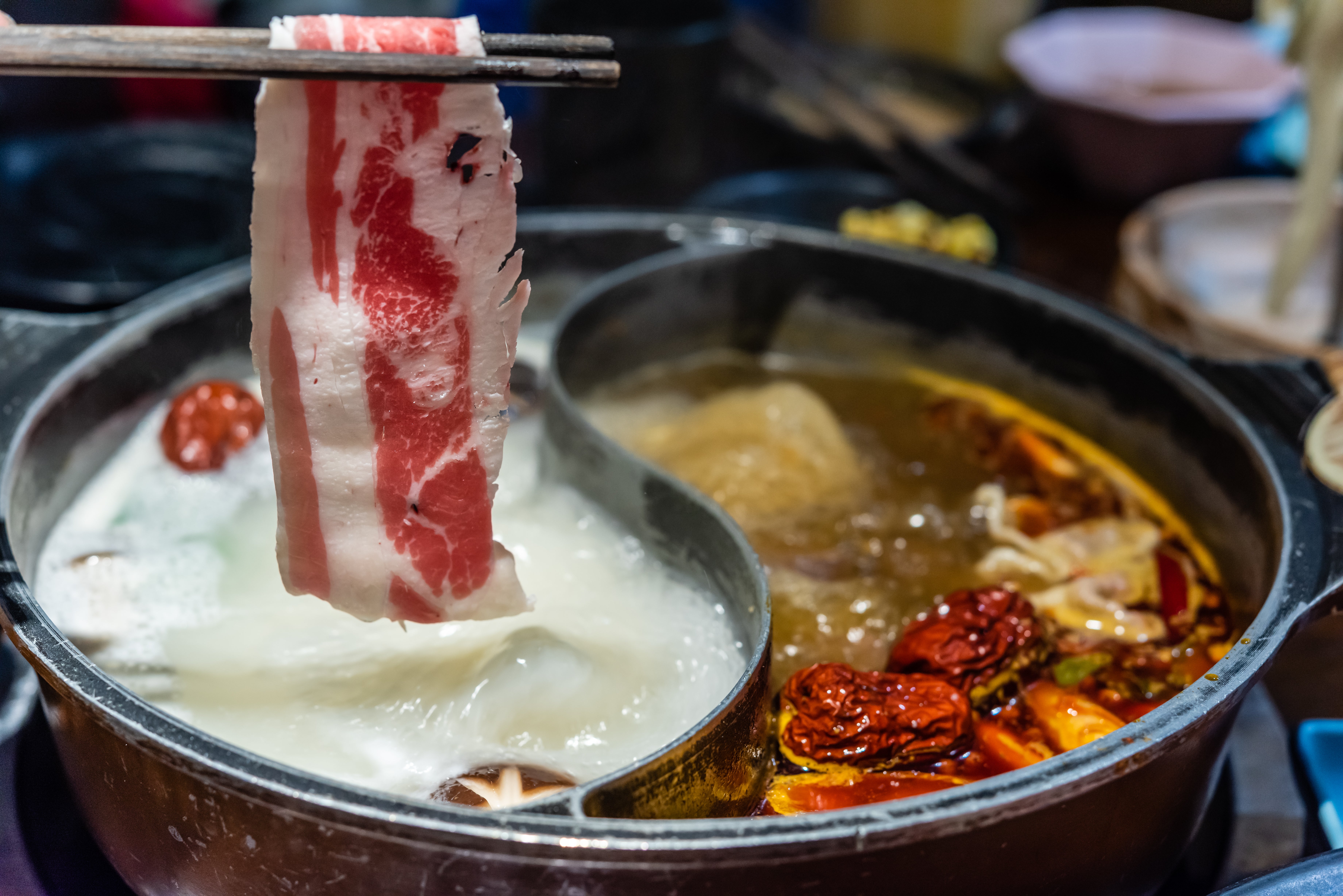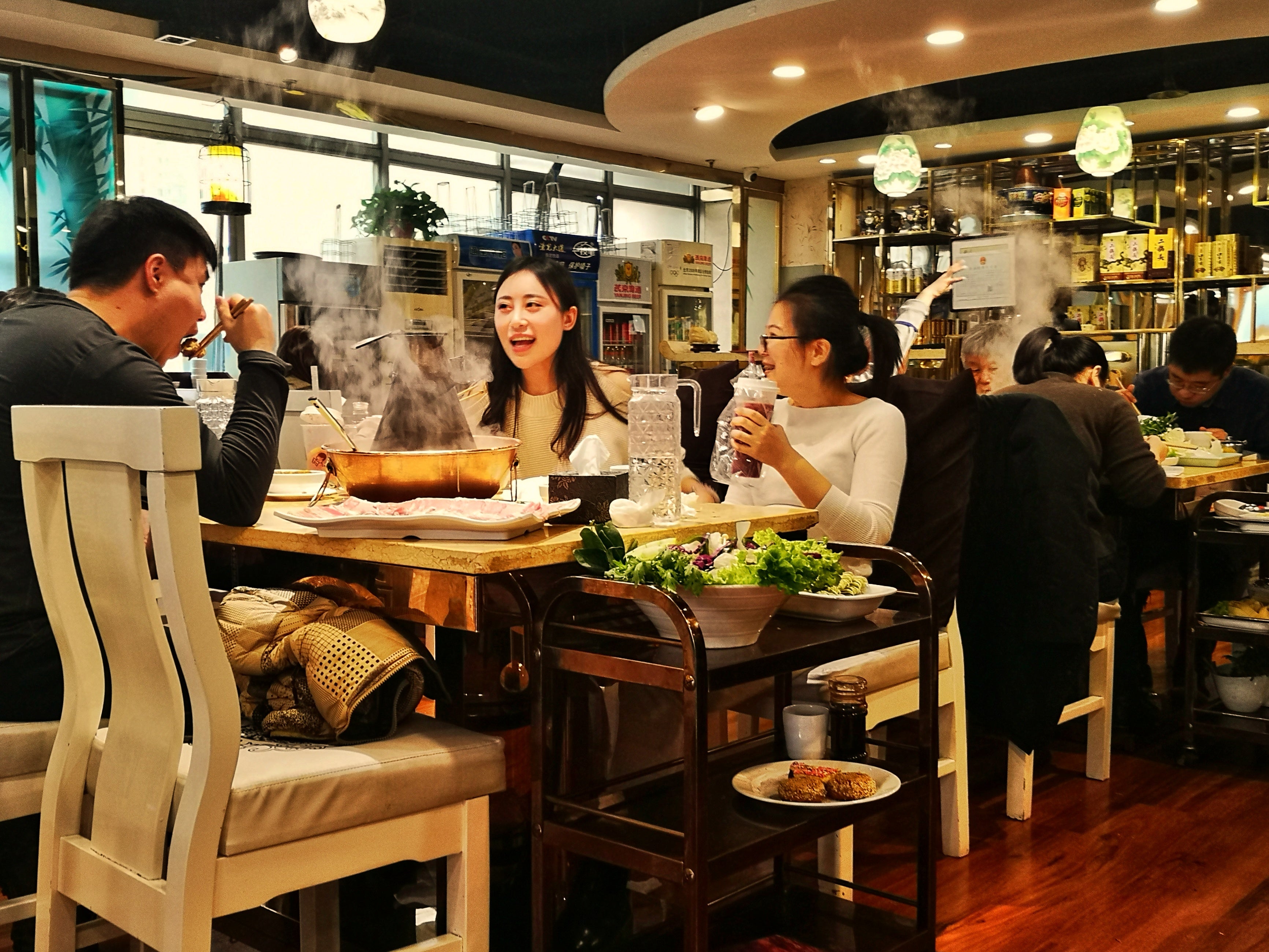Beijing’s winter warmer
THE ARTICLES ON THESE PAGES ARE PRODUCED BY CHINA DAILY, WHICH TAKES SOLE RESPONSIBILITY FOR THE CONTENTS

As Chinese traditions go, few things are better than sitting around a steamy hotpot as winter drapes a chilly cloak over northern China.
Archaeological studies support the claim that Kublai Khan, the founder of the Yuan Dynasty (1271-1368), invented the mutton hotpot. In the frenzy of battle, Khan’s subordinates had to make do with just dipping the mutton in boiling water to cook it for him.
Mutton hotpot was very popular among the royal families of the Qing Dynasty (1644-1911). From the imperial food archives, Emperor Qianlong (1711-99) was a true hotpot lover, indulging himself with the bubbling dish more than 200 times in 1789.
The public believes mutton has a therapeutic effect of warming the body, which makes it an ideal food for the colder months.
Traditional Beijing instant boiled mutton is known for its simplicity. It has no saliva-inducing hotpot soup but plain water infused with some scallion and ginger slices. In some, more luxurious cases, Chinese desert thorn, dried mushrooms and shrimps are added.
Since 1996, Cai Shihong has stuck to the old-fashioned way at his Uncle Yang’s Mutton Hotpot (Yangdaye) restaurant in Beijing.
From just six tables, Cai’s mutton hotpot business has grown to six spacious venues in Beijing, Shanghai, Hubei province’s Wuhan and Zhejiang province’s Hangzhou.

The 64-year-old Beijinger admits the key to his success is keeping everything traditional. The quality of the mutton plays a significant role in the hotpot experience, and quality control should be in place from the very start. The meat tastes the best when the sheep is about one to two years old, Cai says.
“Sheep growing up completely in the wilderness have too much muscle and too little fat, and are hard to chew, while those who spend all their time in a pen will carry an odour that needs to be covered with spices.”
The best meat comes from sheep reared in a combination of the two environments, so the fat and muscle are at an optimal balance for the taste buds, he adds. Good knives and butchery skills also count for a lot. An experienced chef can slice the meat so thin that people can read the words of a book through the meat.
Although the advent of mutton slicing machines have relieved chefs of manual butchery to a large degree, many restaurants have retained the tradition of hand-cutting meat.
At Donglaishun, Chen Lixin has become the fourth-generation inheritor of the restaurant brand’s mutton-slicing technique that was named a national intangible cultural heritage in 2008. Mutton slicing has even become a performance art at the restaurants these days.
Frozen tofu, Chinese cabbage, vermicelli made from bean starch, and baked pancakes are equally indispensable ingredients in authentic old-fashioned mutton hotpot.
When the water boils, a dish of fatty slices from the tail is poured in to grease the pot, and then the mutton slices can be added. After the meat, it’s time for frozen tofu, which will absorb the mutton soup and create an explosion of flavour on the palate. Then, cabbage leaves can be baptised in the brine to balance the taste and nutrition, easing the cloying of the rich, meaty flavours and making room for the last serving of the baked sesame pancakes.
The copper pot and ingredients, including sesame sauce, chilli oil, pickled leek flowers and vinegar, also have to be present to complete the ritual.
Certain old ways, though, have been adapted to modern tastes and requirements.
At Manhengji mutton hotpot restaurant in Beijing, boss Man Jun has installed ventilators on each table to remove the smoke from the burning charcoals. He believes it makes for a better guest experience.
Previously published on Chinadaily.com.cn
